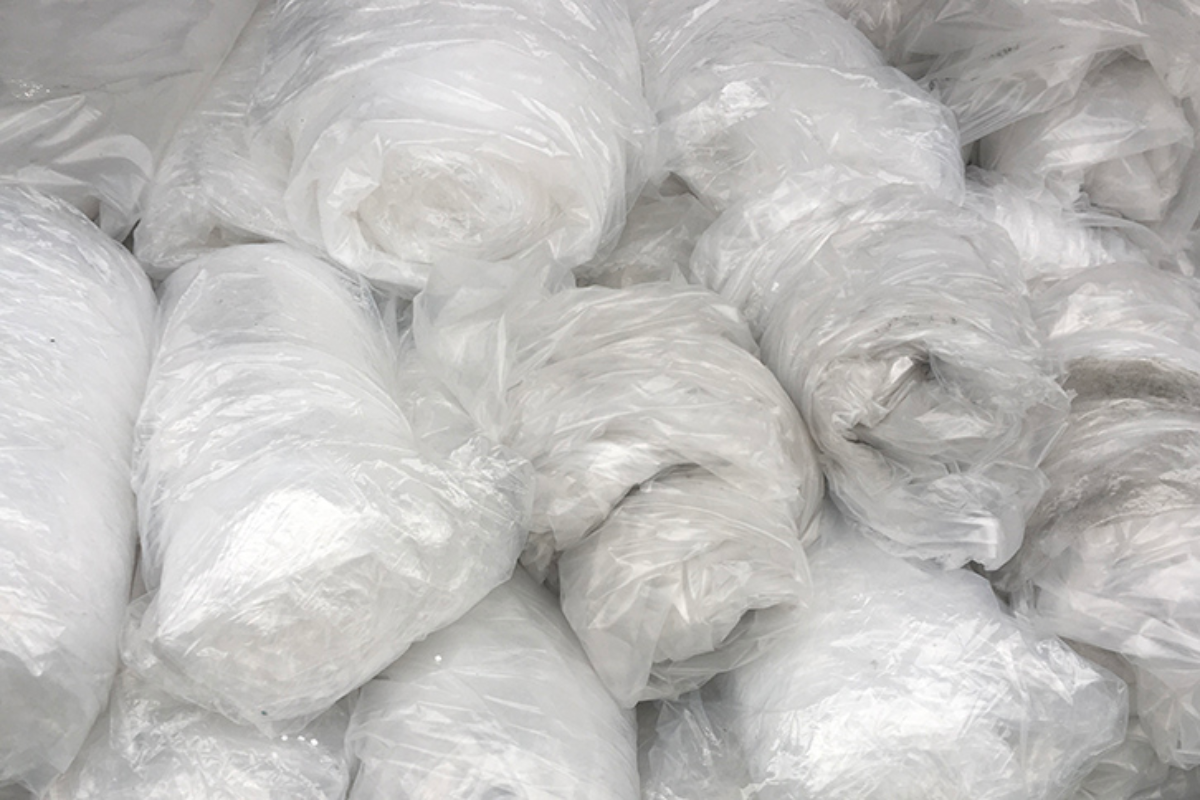
Last year, Trex sourced 328 million pounds of PE through all its channels, and it recently released a drop-off guide to help increase that volume. | Joyce Blessthink/Shutterstock
A major processor and end user of recycled PE film has rolled out a user-friendly guide showing film drop-off locations nationwide, seeking to bolster its feedstock source through consumer education.
Trex this month rolled out the resource as part of its NexTrex network, which is part of the company’s sourcing arm. Branded NexTrex in 2019, the network consists of some 32,000 retail stores that generate film in a variety of ways. Trex recovers the material both from back-of-house commercial settings, which generate lots of clean film like pallet wrap, as well as from the consumer-facing drop-off receptacles in retail stores. Last year, Trex sourced 328 million pounds of PE through all its channels.
The new directory is focused on the post-consumer side, allowing site visitors to enter an address or zip code and find a nearby store location that accepts film and specifically supplies it to Trex.
“When you drop off plastic bags and film at a NexTrex recycling location, you know exactly where those materials are going and how they will be used,” said Stephanie Hicks, materials and recycling programs manager for Trex, in a statement.
Previously, the company maintained a general guide that was essentially a list of participating stores in each state that hosted drop-off receptacles.
Resource comes amid scrutiny on drop-off
While the directory is, on its face, simply a more advanced and user-friendly version of the previous list of stores, it takes on additional significance due to recent turbulence in the U.S. drop-off film recycling landscape.
Last year, an ABC News investigation used AirTags to track material dropped off in a film recycling receptacle, and it found that half of the trackers ended up in the disposal stream rather than recycling facilities. Bloomberg News published a similar investigation later that year, finding only a small number of the trackers ended up in recycling facilities.
And this year, a report by the U.S. Public Interest Research Group and Environment America targeted Amazon’s flexible packaging but also indicted the U.S. drop-off film recycling system as a failure.
At the same time the system was seeing heightened scrutiny, the recycling sector lost a resource that was previously the most widely cited directory for consumer-facing film recycling options. In November 2023, the Film Drop-Off Directory hosted at BagAndFilmRecycling.org was taken down by its administrator, recycling consulting firm Stina Inc.
The removal came after the directory had been maintained for 20 years, and Stina leaders attributed it to the loss of funding from plastics industry groups. Without funding, Stina was unable to ensure the guide was up-to-date and accurate, and one leader said continuing to list outdated information risked eroding public trust in drop-off recycling. That became particularly apparent when the directory was referenced in the ABC News investigation, as some of the material that ended up in the disposal stream was dropped off at locations listed in the Stina guide.
The guide’s removal left a void in verified and validated drop-off information.
There are other online databases like Earth911, which provides a comprehensive list of local recycling options for all types of materials. But in an era of heightened scrutiny on the downstream disposition of collected materials, the type of verification that Stina was doing before losing funding has taken on even more significance. When it was actively maintained, the Film Drop-Off Directory was “updated, added, and removed throughout the year based on lists provided by retail chains and reclaimers, crowdsourced input and feedback, and listing spot check phone calls,” it stated on its website.
Trex offers greater trust in downstream management
In announcing the NexTrex directory, company executives drew a distinction between its network of collection sites, and a drop-off system without visibility into downstream processing activities.
“This directory reinforces Trex’s involvement in the entire recycling process, from the collection and processing of plastic film to the creation of sustainable outdoor living products,” said Dave Heglas, senior director of recycled materials for Trex, in a statement. “Unlike other retail recycling programs, we actively manage the process from start to finish to ensure the plastics that are dropped off at our partner locations successfully make their way to Trex where they are given new life as beautiful and sustainable Trex decking.”
The NexTrex program has been endorsed by industry stakeholders, including Stina: When it pulled the guide, Stina pointed to the NexTrex list of participating stores as the best alternative for consumers to refer to. In a statement this week, Nina Belucci Butler, CEO of Stina, praised the new resource.
“The NexTrex website and new directory offers the most accurate information for the public on what to do with the broad range of clean, dry film found in nearly every household and business,” Butler told Plastics Recycling Update.
How2Recycle, the on-package labeling initiative, which used to direct people to the Film Drop-Off Directory, also points site visitors to the Trex list of retail stores.
Additionally, while the report criticizing Amazon’s packaging was largely focused on loads of material that didn’t end up in recycling centers, it incidentally confirmed that Trex is a major receiver of dropped off film: Of 93 trackers placed in drop-off locations, 24 were confirmed to end up at Trex processing plants.

